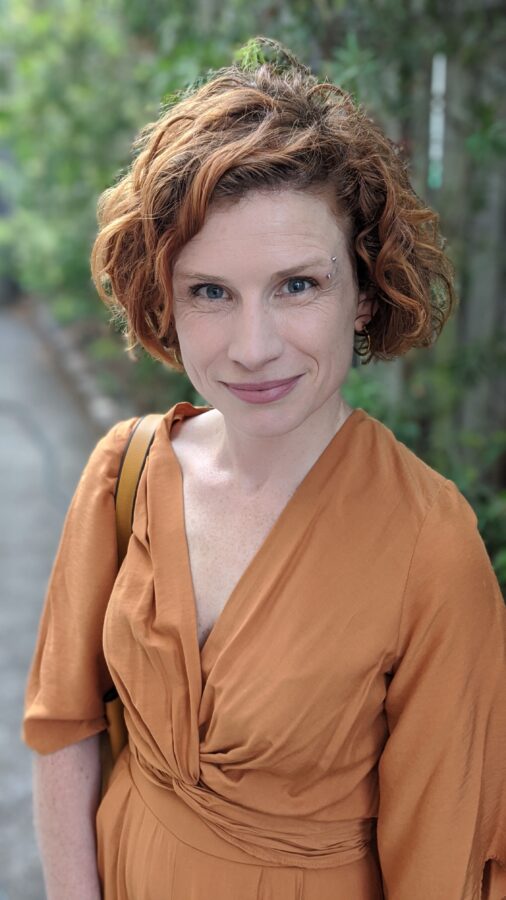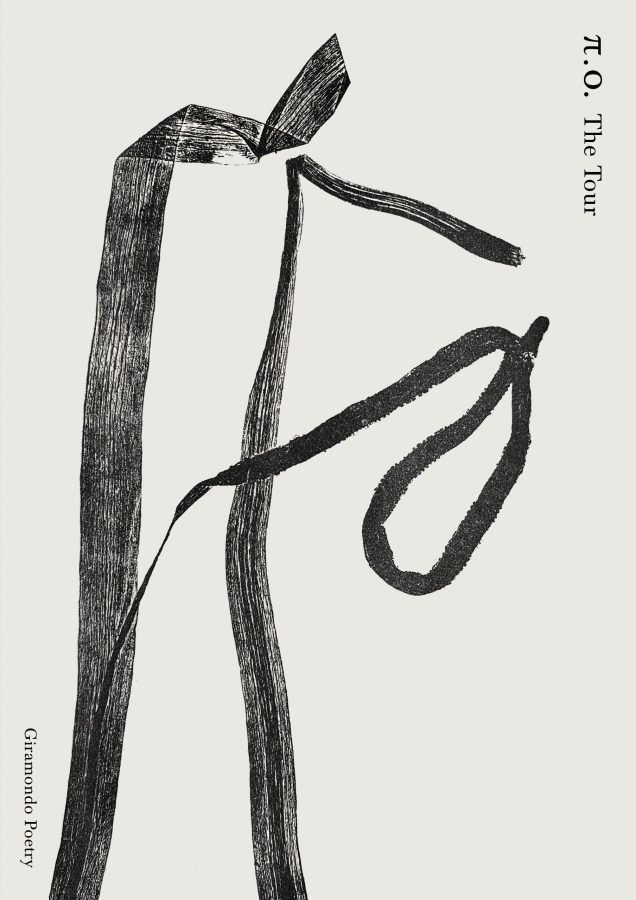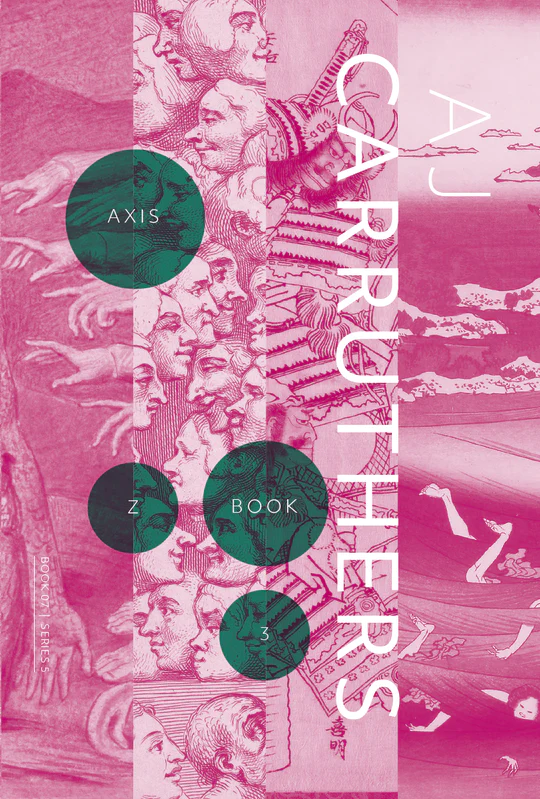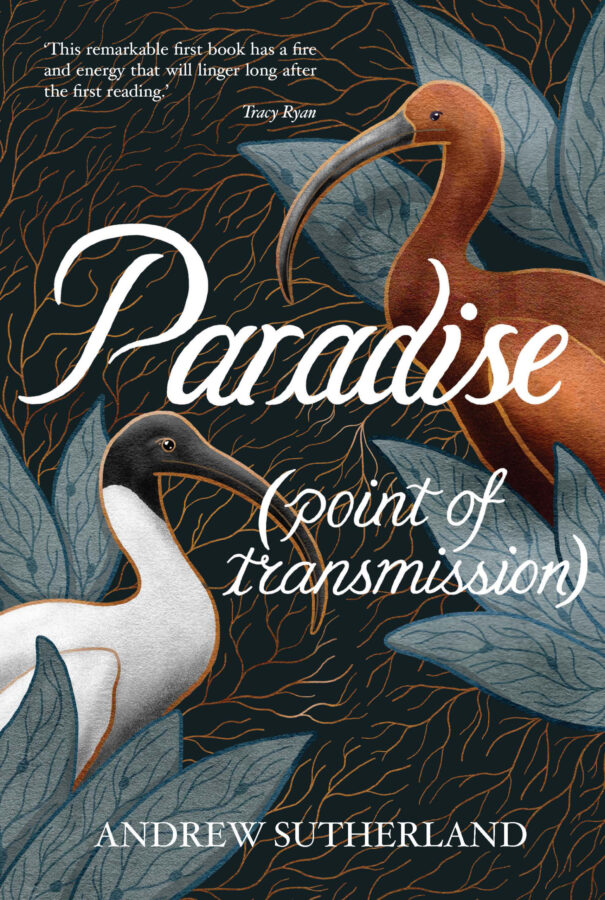There’s a poem in Sylvia Plath’s Ariel that I have a memory of reading that’s so visceral it’s almost painful. It’s a relatively quiet poem, for Plath – there’s no bleeding-mouthed flowers, no black-booted tyrants or shrieking birds, no bodies sliced open or otherwise bleeding. Instead, ‘Sheep in Fog’ describes a landscape, simple and still, drawn together with that aching sadness that Plath does so well:
The hills step off into whiteness.
People or stars
Regard me sadly, I disappoint them.The train leaves a line of breath.
O slow
Horse the colour of rust,Hooves, dolorous bells –
All morning the
Morning has been blackening,A flower left out.
My bones hold a stillness, the far
Fields melt my heart.They threaten
To let me through to a heaven
Starless and fatherless, a dark water.
Whenever I read this poem, even now, I’m always swung back to how I felt and who I was the first time I encountered it; I’m suddenly standing, once again, on the platform at Mortdale station, very early on a winter morning, on my way to university. There’s a thick fog rising up along the train line – the station perches on the crest of a hill, the suburb slopes away on either side of it, mostly wide-fronted fibro cottages, blocky red apartment buildings, a single strip of shops: butcher, newsagent, bakery, fire station, RSL. Something about the place this morning, the stillness, the quiet, its unpeopledness, makes it feel just like the small village in Plath’s poem, several continents and decades away; so too does my own sadness, my own sense of disappointment.
I can’t place this memory exactly in time, I’m unsure if I was 18, 19, even 20; in any case, I was breathtakingly young. I’m not sure if I was healthy still, or recently unwell, although I remember being cold, bone-cold, so it’s likely that I was already losing weight. When I think back to this time now I know that I felt starless, felt a dark water always rising within me, but didn’t have the language yet to recognise this as depression, the unbearable sadness that may well have lain at the heart of my disordered eating all along. Those dolorous bells I could already hear echoing in the empty chambers of my chest.
I like to say, these days, that there’s a certain type of adolescent woman who always goes through a Plath phase. They’re not necessarily all poets, but they’re generally creative, and they’re angsty, sad or angry, or all of these by turns, uncertain of their place in a world which doesn’t seem to match their own extremity, their expectations. It’s easy to say this, especially because it dismisses the adolescent woman who I used to be, who I know I carry within me somewhere still. Sylvia Plath was one of the first poets I read, one of the first poets I was really moved by, the first poet who I really loved. But it’s not ‘Sheep in Fog’ that started me thinking again about Plath. It’s my friend Lucy.
I first met Lucy* about two years ago, in a hospital day program, my second time in treatment, and her first. It was late January, I was halfway through my admission, and returning to the unmarked terrace house it ran from after a three-week break for Christmas and the New Year. Lucy was just beginning treatment, even though she too had been unwell for almost all of her adult life. She was in her early thirties, a few years older than me, and the oldest patient in the group. She was only just back from her honeymoon.
Barely weeks before her wedding – where she’d worn spiky black and silver boots beneath her white lace dress – she’d first told her then-fiancé about her bulimia, which was both acute and brutal, and had already burned a hole in her oesophagus that had had to be surgically corrected. He hadn’t known, despite knowing her for eight whole years. I still can’t imagine how she had that conversation, or how she managed, for so long, to hold together that much intimacy and deception.
In the hospital, I became close to Lucy immediately. She is a very chatty and sweet-natured woman, one of those people who can strike up a conversation with just about anyone, a trait that I’ve always admired. She has a sly, dry sense of humour, and this too set her apart inside that building where so often we were sitting silently, coiled up in distress or fear, or quivering with tears. In this kind of setting, of course, it’s impossible not to become close. For six hours each day, four days a week, we were together in the same room, talking with psychologists and each other about our fears, our vulnerabilities, the things we’d lost and shamefully gained through our disease. But even with this enforced intimacy, I was drawn to Lucy most because she, quite simply, astounded me.
Lucy was, and remains, the most determined, most indomitable person I have ever met in any of the hospitals I’ve been in. Even though her illness had been with her for over thirteen years, even though she too was terrified of the uncertainty of recovering and did not know how she might live without her disorder, she followed every instruction we were given to the letter, handed over her trust, her mind and her body to the staff in a way that I’ve never been able to match. I know this wasn’t easy for her to do – she asked streams of anxious, often repetitious and occasionally irrational questions at any opportunity, she ate her supervised meals painfully slowly, her head bent over the plate in fierce concentration, she often cried in the morning when recounting how she’d fared the night before. (The psychologists called this process ‘checking-in’ because we had to ‘be accountable’ for what we’d done outside of the program hours, this especially I hated for the rigour with which we would be questioned.) Lucy suffered, like we all did, but she never made allowances for her illness, never fell back to half-measures or small concessions or what the staff called ‘safety behaviours’. And she got better – the way she phrased this, eventually, was that she ‘became symptom free.’
It’s because of this, because every time I see her I get a glimpse of what might lie on the other side of illness, as well as how she makes me laugh and seems to hug me fit enough to break my bones, that I have kept in touch with Lucy. We usually meet mid-morning in a café, and almost always chatter so intently and so joyfully that we lose track of time. I know this doesn’t sound remarkable, but there was a time, and it was not so long ago, that neither of us could imagine this, sitting for hours in a café without being hounded by anxiety, without staring at the food around us because we were so desperately trying to ignore it, without feeling nauseated whenever the smell of bacon hit the air. Lucy has a quirky, almost old-fashioned turn of phrase, says things like his ears are painted on and I travel by two legs and a heartbeat, and she often calls me, casually, babe.
But when I met up with Lucy last week, the first thing she said was that she hadn’t been expecting to recognise me. That she was relieved that she had walked to the right table. That before she’d driven to the café, she’d read over all of our text messages, all of the emails from our two years of friendship, the card and poem I’d sent her when her son was born, to try and place me in her mind. Lucy said that since I’d seen her last – she’d figured it was about eight months ago – she’d once again been hospitalised, this time as an inpatient in a private psychiatric ward, this time for the post-partum depression that had been wearing her away, even then, when last we met. As part of her treatment, Lucy told me, she’d been given electro-convulsive therapy, ECT. And the therapy had wiped two years of memories from her brain.
Here’s how Sylvia Plath describes ECT, as it is administered to Esther Greenwood, the young heroine of The Bell Jar. At this point in the novel, Esther, who has already described herself as being ‘stupid about electrocutions’ (The Bell Jar is set in 1953, the year the Rosenbergs were sent to the electric chair) has recently been admitted to a psychiatric hospital, after several suicide attempts. Here, Esther’s treatment is overseen by the condescending and careless Doctor Gordon, a man who is unable to understand Esther, who barely even sees her because she is a young woman and he is a older man, and one in a position of power at that. Doctor Gordon prescribes and prepares to administer ECT to Esther, and after a nurse removes Ester’s hairpins and watch, she states:
Doctor Gordon was fitting two metal plates on either side of my head. He buckled them into place with a strap that dented my forehead, and gave me a wire to bite.
I shut my eyes.
There was a brief silence, like an indrawn breath.
Then something bent down and took hold of me and shook me like the end of the world. Whee-ee-ee-ee-ee, it shrilled, through an air crackling with blue light, and with each flash a great jolt drubbed me till I thought my bones would break and the sap would fly out of me like a split plant.
She adds, ‘I wondered what terrible thing it was that I had done,’ what terrible thing could possibly be deserving of such punishment, the entire body thrashing and convulsing, the sap of one’s self sent spraying out into the air.
Rationally, of course, I know that ECT is not like this. It has been more than fifty years since Plath wrote about Esther; and medicine in general, and psychiatry in particular, have both changed monumentally across this time. ECT as it was administered to Lucy is so incomparable to how it occurred at the time that Plath was writing that I may as well be comparing Lucy’s experience to having leeches placed on the skin to draw out a contagion. Even within The Bell Jar, much later, a different (and female) doctor tells Esther that her experience was ‘a mistake’ and that ‘It’s not supposed to be like that.’ ‘If it’s done properly,’ she says, ‘it’s like going to sleep…why, some people even like it’. But I can’t get Esther Greenwood, or the Rosenbergs, or even One Flew Over Cuckoo’s Nest out of my mind.
Lucy doesn’t remember what her ECT was like. Lucy doesn’t remember me. But more importantly, she doesn’t remember the day program, or anything she did there, how she found the strength and the tenacity to pull herself free from her disease.
It’s hard to recount exactly what Lucy’s great feats in the day program were, the specific things she did that amazed me, because I know, to anyone on the outside, they don’t sound noteworthy at all. Lucy let her husband cook her dinner without assisting, forcing herself instead to watch TV in the next room. She bought a coffee without asking for it to be served extra hot, and with more hot water on the side. Ordered fish and chips because it is a meal without vegetables, and then did it again, somewhere else, because the first one arrived with a small salad. She ate an apple in the park before arriving at the hospital one morning, because the café breakfast she had already eaten hadn’t included the serve of fruit that was specified on her meal plan. Had peanut butter every day for a week. Ate meat at lunchtime, ate two bananas in one day. None of these things sound remarkable, but each of them involved acting against the rigid rules and clenching dread of her disease, each of them meant defying the anxious, insistent protests of her mind and body, each of them meant terror and exhaustion, meant shaking hands and a gripped up throat, a careening heart and tears. Each of them was an act of courage and of determination, of defiance and bloody-mindedness and grit.
And I think of this whenever people tell me, as they have been recently, that because I wrote a book about my illness, I am brave. I think I know what they’re trying to say, however clumsily, and I know that it is partly because of the self-negation that my illness still insists upon that I can’t quite accept the compliment, but it’s Lucy’s quieter, less spectacular kind of bravery that I feel is more profound. Writing sometimes makes me sad, sometimes fills me with regret, but it never makes me afraid, and without fear I do not think that it is courage that I ever need to call upon. But Lucy was terrified, in the hospital, we all were, and the thing that she stood up to is herself. It can’t easily be recognised, except by her alone. But Lucy doesn’t remember.
For months before entering the hospital, Lucy and her husband had been trying for a baby, but her broken body – too starved to regulate its hormones, too disrupted from forced vomiting to stabilise its levels of minerals and salts – couldn’t conceive. (‘Perfection is terrible, it cannot have children’, writes Plath, much later in Ariel.) Two weeks into the admission – after just fourteen days of regular eating, just fourteen days of adequately nourishing her body – Lucy fell pregnant.
This is still the most powerful testament to the resilience of the body that I know.
But Lucy doesn’t remember. Not her own bravery, her dogged persistence, the completeness with which she recovered from an illness that had dominated almost half her life. Not her pregnancy, the fierce determination with which she met that too. Her honeymoon, painting her nursery, even childbirth, the first months of her small son’s life, all of these such profound experiences that I have trouble even contemplating them, can’t imagine how they might look, should my future involve them, in my own life. So too has everything that she has meant to me has disappeared from her own narrative of her self, her own understanding of her history and her present.
A few hours before I met up with Lucy, I’d read a Twitter conversation started by a Melbourne writer who’d imagined how future biographers might reconstruct our lives by reading social media feeds (The work will be heinous, he wrote, ye gods). Three days before I met up with Lucy, I’d put the final touches on a Sylvia Plath costume I’d been making for an upcoming party with a theme of ‘Famous Deaths’: a painted and decorated gas oven made from an old archive box (its dials were lids from bottles of Diet Coke and a calcium supplement jar) that I’d planned to wear on my head. Most of the party would be young, dark-humoured and theatrically cynical academics, the kind of crowd who would appreciate my turning up as a female poet with a mental illness – but suddenly neither joke seemed very funny at all.
Because of the cultural understanding that we have of ECT, shaped at least in part by Plath, I was surprised when I learned that ECT is still a part of psychiatric practice, still used to treat depression, and fairly commonly as well. I was in a different hospital day program, when I discovered this, one year after I’d met Lucy. A nursing student from my university, who was interning there, mentioned with excitement that she was going to observe an ECT treatment that afternoon and the horror must have been clearly written on my face. ‘It’s done under anaesthetic these days,’ she said, as if that were all she needed to explain.
In modern ECT, the patient is given a muscle relaxant as well as an anaesthetic before the electrical current is applied to the brain. The current is designed to induce a seizure in the organ, lasting about a minute, before consciousness is gradually reinduced. The muscle relaxant ensures that the body barely moves (no drubbing bones), the electrical current is steady and low (no crackling blue light), the anaesthetic means patient feels and remembers no pain. And the treatment can be very effective – different sources measure its success in alleviating symptoms at somewhere 50 and 80% of patients, and it is especially useful in cases where suicidality is high. Nobody understands how or why the treatment works, because the brain and its operations are still so poorly comprehended by science and medicine both. There’s no good reason why inducing a seizure, literally shocking and arresting the brain, should recalibrate its operation, but for some people, sometimes, it does. (Lucy doesn’t think it helped her, though.)
Amnesia is ECT’s most common side effect, although it is generally only an anterograde amnesia, affecting the ability to make new memories during and immediately after treatment. The memory loss, even when affects past experiences, is usually short-term, patchy, and mostly recoverable, slowly reversing in the months after the ECT course is completed. Cases like Lucy’s, that is, where whole chunks of time are entirely missing from her memory, are rare. But rarity doesn’t make what Lucy has lost less incalculable, less profound. I imagine suddenly waking in a hospital, two years from now, being hugged by a toddler who I’m told is my own child, talking to a psychiatrist who knows all about my family and my history although I’ve never spoken to her before. Walking up to a café, and hoping against hope that I might recognise my friend.
One of the other patients who was admitted in the day program, alongside Lucy and me, was a nineteen-year-old student from the south coast who had a fig tree tattooed on her hipbone, an homage to The Bell Jar. Another, who I met much later, had in cursive script along her the underside of her arm the words ‘I am I am I am,’ the sound Esther hears her heart drumming when she turns back from an attempt to drown herself by swimming out to sea. I too loved The Bell Jar when I first read it in my early twenties, for how it first articulated my own inarticulate adolescent sadness, those dolorous bells. The image of the fig tree was one that seemed to illuminate my own life, to reveal a truth I’d never seen before, in the way that the very best metaphors can do.
The image is a daydream of Esther’s, who imagines herself sitting in a fig tree, surrounded by ripening fruit, each of which represents a particular life that she could choose – a poet, an editor, a mother, love affairs, travel, things she can’t even envision yet. She knows that she must choose a fig, but that the moment she does, all the others will fall to the ground, and she sits there, paralysed by choice and ‘starving to death’ as the figs slowly wither around her. It’s not an image of being spoiled for choice, but of being uncertain, being unable to specify what it is that she wants, being unable to see or name, let alone claim, her longing, her desire. Esther knows only that she wants, she feels this keenly, but doesn’t know what it is that might fill that nebulous longing inside.
What Plath offers here is recognition, and a form and meaning for her experiences (Esther’s life is very closely patterned on Plath’s own) that helped me, and so many women like me, I think, to hold and shape my own, especially at a time when so much of my own self and world felt as viscid as an undercooked egg. I was only just an adult, only just stepping out into the world, and I didn’t know how to meet it, which face to show it, what it might offer me in turn. I held this image close, have quietly carried it with me ever since, and each time I meet another woman who has done the same, it makes me question how many things there are that we are saying and feeling and experiencing that are not answered, or even acknowledged, by the wider world.
ECT is mostly used for depression that doesn’t respond to medication or cognitive therapy – in cases like Lucy’s, were so many other treatments have failed. But it’s also administered unevenly: almost 75% of ECT patients are women.
When Lucy told me she was pregnant, we were walking along the coast near Bondi Beach, on the escarpment path that culminates in a keyhole-shaped lookout, a natural sandstone cliff that has been reinforced with huge stone bricks, all pocked and scratched by the sea winds that buffet the area. I was delighted, and I hugged her to me, but when I pulled away I saw that she was crying. Pregnancy is a strange and often terrifying experience for eating disordered women, even more so than it must be strange and terrifying for any woman. It meant that Lucy’s weight, the thing by which she had measured her life for so long, was not going to stabilise any time in the next nine months, like we’d been told it would in the hospital, our bodies eventually settling at their ‘set point’ once we’d attained a normal enough eating pattern and maintained it for a long enough time. But more importantly, the behaviours by which Lucy had for so long controlled her anxiety and emotions, bingeing, purging and exercising, were now entirely unavailable to her in practice, whereas for the rest of us, they were only unavailable in theory. Lucy’s obstetrician had warned her that the single most harmful thing that she could do to the development of her unborn child was compensate in any way for eating.
Later that morning, after we’d shared a soft-centred muffin at a beachside café, Lucy set a timer on her phone and took off the black jumper she’d been wearing over her shirt. She was practising what she saw as ‘exposing’ her changing body, her stomach still barely noticeable, only just clear of the first trimester as she was. She’d been doing this, increasing the time she spent less covered by two minutes at a time, for weeks now. Lucy had always been particularly self-conscious about her stomach and her breasts, it was against these parts of her body that the energies of her illness had been directed, and it was these that her pregnancy was changing most, moving most entirely from her control. This small act, of taking off a jumper, this too was incredibly courageous, all but invisible to the people walking past us.
There are images of electricity all through Ariel. There’s an elm tree with ‘red filaments [that] burn and stand, a hand of red wires’ and that ‘break[s] up in pieces that fly about.’ A sky described as ‘palely and flamily/ igniting its carbon monoxide’. A reference to having ‘seen my strangeness evaporate/ Blue dew from dangerous skin’, so eerily resonant of Esther’s vision of herself as a split plant haemorraging sap, blue dew flying from her skin. In ‘Tulips’, a poem that I have always loved, Plath writes that the hospital staff have ‘swabbed me clear of my loving associations’, and I can’t help but think, reading this, of Lucy, her swabbed forehead lying against a hospital bed, the electricity wiping our friendship from her brain.
And then there’s the poem ‘The Hanging Man’, named for a tarot card, which depicts a man suspended by his ankles from a tree, and is said to augur some kind of suspension, indecision or uncertainty (the very things that eating disorder patients fear the most) or sacrifice (the thing that we are best at). The poem is horrifying in its violence, and in its similarity to what Esther Greenwood describes – sizzling, snapping, being held and harmed at the very core of the body, as well as in the awful, ambiguous statement at its conclusion:
By the roots of my hair some god got hold of me.
I sizzled in his blue volts like a desert prophet.The nights snapped out of sight like a lizard’s eyelid:
A world of bald white days in a shadeless socket.A vulturous boredom pinned me in this tree.
If he were I, he would do what I did.
‘If he were I, he would do what I did’, like, ‘I wondered what terrible thing it was that I had done’: there’s a sense that our illness, or at least its treatment, is a penance, something that we have earned or that we deserve because of our bad character, bad choices, bad behaviour. Rationally, of course, I know this is not true, I know that mental illness is no less arbitrary, no less senseless than physical disease, but there is a part of me, perhaps there always will be, that still thinks I somehow brought my illness upon myself.
Plath keeps writing about electricity, about punishment, about atonement. It’s as if the electric shocks are still imprinted on her brain, as inescapable as sadness. As if she can’t help but circle back to them, again and again, as she writes. As if ECT were an indelible mark on memory, rather than the chasm of forgetting, the world of bald white days, that it is for Lucy.
What I’m struggling with, in Lucy’s story, I know is twofold, and terribly contradictory. It pains me that Lucy can’t remember the astonishing, the truly magnificent woman that she was when we were in that hospital, that she can’t remember how she found the strength and the tenacity to change, to restructure her life so completely. And I know I’m writing this in part because I need to insist that it still happened, that everything her story has meant to me is still valid, still important, still possible for us all. But there’s a part of me too that can’t help thinking that if there is one experience in my life that I would happily erase entirely from my mind, that hospital day program would, without question, be it.
Except that it can’t be, it mustn’t be. Because Lucy doesn’t remember that treatment, after she was released from the private hospital, her bulimia came back. And she couldn’t remember how she learnt to overcome it, had to do it all over again.
The last time I saw Lucy while her memory was intact, that time she estimated was eight months ago, we sat in a park near my house with takeaway coffees, taking it in turns to throw handfuls of dry leaves over the blond head of her son, who was giggling with delight. She’d told me that her doctors were changing her meds, a process that can be awful and wracking for the unpredictable changes – headaches, nausea, mania, mood swings, limb-leadening fatigue – it can induce in the body and brain, for the complete lack of certainty it involves: it is essentially a series of experiments with different chemicals and dosages and no controls until something seems, in some often unquantifiable way, to work. She said that she’d been given a different diagnosis, the third she’d had since I had known her. She’d seemed less focussed, a little vague, somehow, around the edges, but I know I’m trying to think back and find some sign, some clue that she was struggling as much as she must have been, that what happened next was already fomenting.
I realise too that I’d been holding Lucy’s story as a narrative of how things can and do, sometimes, end well, of a recovery that is absolute and therefore absolutely finite, even though I also hate this kind of narrative of illness, even though I know it doesn’t fit with my own life. I’d seen it as finished, and then Lucy’s story had kept on unfolding. Of course it kept unfolding, because that is what all lives do. Our stories don’t just end, don’t divide neatly into discreet chapters; and what comes after always casts a different light on what we thought we knew before.
Lucy is symptom-free, she said this week, once again. So I can’t help but think that somewhere, somehow, some part of her brain was still patterned with what we learnt in hospital, even if she cannot bring it to her conscious mind. Or perhaps that this means that her bravery, her fierce determination, her resilience and strength are even greater than even I had remembered them as being, because not only did she overcome her illness, but she did it twice. And I know too that even though Lucy doesn’t remember who and how she was before the bald white days replaced the fraught and fragile ones we spent in hospital together, I won’t, and I can’t, ever forget.
*Lucy’s name and some other identifying details have been altered to protect the privacy of individuals in this essay.
Works Cited
Sylvia Plath, The Bell Jar, Faber and Faber, London, 1963.
Sylvia Plath, Ariel, Faber and Faber, London, 1965.





